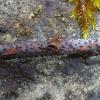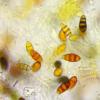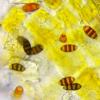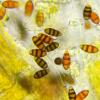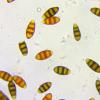
27-05-2021 21:01
 Lothar Krieglsteiner
Lothar Krieglsteiner
found today (27.5.2021) in the Eifel Nationalpark,

23-06-2015 12:22
Gernot FriebesHi,I'm looking for the following publication:Lundq

28-05-2021 07:54
 Khomenko Igor
Khomenko Igor
Hi,I think it is a good match to Orbilia phragmotr

25-05-2021 13:24
 Chris Yeates
Chris Yeates
A Podospora has appeared on the same collection of

26-05-2021 14:15
Hi Forum,does somebody have the following paper: K

25-05-2021 08:40
Dirk GerstnerHello everyone,I am new here in the forum. Thank y

24-05-2021 21:41
 Edvin Johannesen
Edvin Johannesen
Hi! This tiny (0.2-0.3 mm), orange one is growing
anamorph on Euphorbia cyparissias
Lothar Krieglsteiner,
27-05-2021 21:01
 found today (27.5.2021) in the Eifel Nationalpark, Germany.
found today (27.5.2021) in the Eifel Nationalpark, Germany.The conidia are about 14-16/6-7,5 µm large.
Does somebody have a hint or proposal?
Best, Lothar
Thorben Hülsewig,
28-05-2021 17:56
Re : anamorph on Euphorbia cyparissias
Hi Lothar,
maybe it is a Seimatosporium.
best regards,
Thorben
maybe it is a Seimatosporium.
best regards,
Thorben
Lothar Krieglsteiner,
28-05-2021 18:22

Re : anamorph on Euphorbia cyparissias
Hello Thorben,
thanks for the hint!
Best regards, Lothar
thanks for the hint!
Best regards, Lothar
